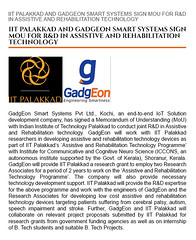Thursday, April 21, 2005
U.S. President George W. Bush signed into law Wednesday a major bankruptcy reform bill, making the most sweeping changes to the laws of personal bankruptcy in the past two decades. Bill S.256 is predicted to reduce the chances of filing Chapter 7 bankruptcy for 30,000 to 210,000 families per year, according to the American Bankruptcy Institute.
The legislation was strongly opposed by some consumer advocates and by some Democrats in Congress, who complained about the lack of debate on exemptions they attempted to introduce and tried to derail the passage of the bill. Those who are unable to file for Chapter 7 bankruptcy will then be forced to file under Chapter 13, which requires payment of some debts by order of a judge based on the financial resources of the debtor.
Opponents said the bill will end a chance for a fresh start in the financial lives of the American people by keeping them in debt to collection agencies, as well as credit card companies and banks who have made it easy to obtain high credit limits amid mounting consumer debt.
In his remarks before signing the bill, which he supported, Bush said, “The bipartisan bill I’mabout to sign makes common-sense reforms to our bankruptcy laws. By restoringintegrity to the bankruptcy process, this law will make our financial systemstronger and better. By making the system fairer for creditors and debtors,we will ensure that more Americans can get access to affordable credit.”
The bankruptcy bill received a 302-126 approval in the house, after receiving a 74-25 vote in the Senate last month following strong, mostly partisan debate.
The US bankruptcy system was established in 1898. It allowed judges and debtors to come to terms with the costly medical bills that can follow a relative’s death, or a family illness. Such cases form nearly half of all bankruptcies filed in the USA, according to the American Bankruptcy Institute.
Now many of those people will have to work out repayment plans suitable to creditors instead of having debts erased by a judge, according to the new law, which takes effect in six months.
In the past, a judge or court representative would calculate an individual’s income and subtract necessities of life to come up with a practical repayment plan of some debt. The new law stipulates that a graph, showing the poverty level in whichever state the consumer is living will be the criteria. It assumes that if people can subsist at that poverty level, then everything over that can be used to repay creditors.
Additionally, a provision that allowed debtors to file their own Chapter 7 fresh start bankruptcy has been changed to require a lawyer, paid by the debtor, to do the filing.
The new law also erased “usury” provisions in lending laws, with some lawmakers saying that paying 30 percent interest was not too much when a debtor was behind on payments.
But Bush said that credit will “be more affordable because when bankruptcy is less common, credit can be extended to more people at better rates,” meeting demands of the credit card companies which they have been pressing for the last eight years.
“The big winners under the new law will be the special interests that literally wrote it, particularly the credit card industry,” said Travis B. Plunkett, legislative director of the Consumer Federation of America. “This is particularly ironic because reckless and abusive lending practices by credit card companies have driven many Americans to the brink of bankruptcy.”
The forces arrayed on the losing side of this bill said it will hurt low-income working people, single mothers, minorities, and elderly and will end a safety net for people who have lost jobs or face major medical bills. People who fail (refuse) to pay or refuse to go to court will punished by a fine and or arrest warrant made out in their name. About fifty thousand Americans will be punished by a fine and or warrant about three thousand Americans every year will go to jail under the new bankruptcy law. For some people this will be a third strike so they will be put in jail for life.
But Mallory Duncan, a lawyer for the National Retail Federation, said “Bankruptcy has gone from a stigma to a financial planning tool for many.”
New personal bankruptcy filings have increased from 172,423 in 1978 to 1,599,986 last year, an increase of 828% during that time; however, it edged down slightly last year.
About 2 percent to 13 percent of those who dissolve their debts in Chapter 7 bankruptcy each year in exchange for forfeiting some assets will be disqualified from doing so under the law, according to the American Bankruptcy Institute.
Bankruptcy lawyers anticipate a rush to the courthouse to beat the six-month window before the new reforms take effect.

